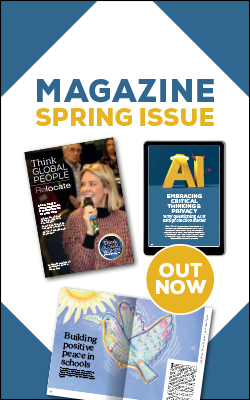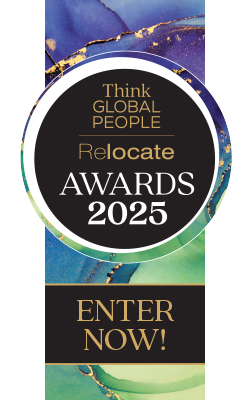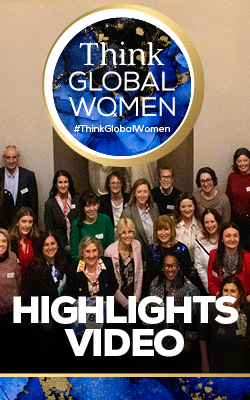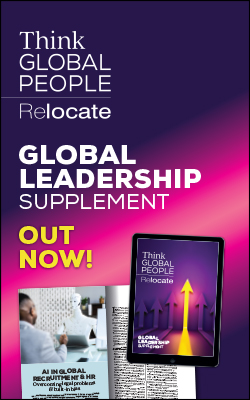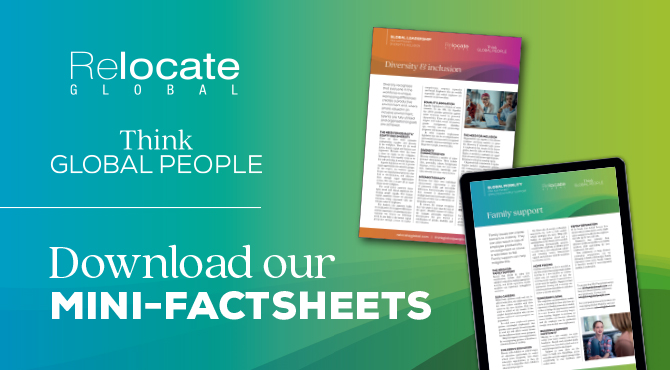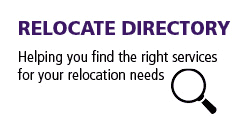Managing transformation and change across borders
The biggest election year in history, 2024, is over. The new year and 2025 promise fresh agendas, policy frameworks and therefore more change as businesses capitalise. What does this mean for adapting to and navigating complexity in multinational teams and organisations? Ruth Holmes reports.

This article is taken from the Leadership Supplement from
Relocate Think Global People
Click on the cover to access the digital edition."We were much more ready than anticipated culturally for this – you cannot imagine how people will thrive until you give them the space. Berna Öztinaz, CHRO, Genel Energy Plc"
December 2024 offered a moment to take stock of the likely changes ahead after half the world’s population had the chance to vote in national elections. As 2025 gets underway, commentators, professional services firms and consultancies all published their predictions for the new year. Notable among all of them was that change – and equipping ourselves and preparing our organisations for it.Living in VUCA (volatile, uncertain, complex and ambiguous) times is demanding. It is why wellbeing support is key for businesses to attract, recruit, retain and develop employees. Supporting people to maintain and build resilience and psychological capital to achieve both personal goals and align with the organisation’s objectives is a significant competitive advantage. Constant evolution is also about communicating and recognising change as a trust and human ‘hearts and mind’ challenge – not a resource reallocation issue.
Internal communication builds trust
Around 70% of organisational changes fail to meet their objectives*. Trust is underpinned by the belief that people understand how they personally contribute to achieving the strategy, what it is, and the progress being made. Articulating the ‘why’ and ‘how’ of change therefore makes internal communication fundamental when it comes to change management, navigating complexity and framing uncertainty.The Institute for Internal Communication’s ‘2024 IC Index’ links excellent internal communication with high levels of trust in leadership and retention rates. Trust is also retained after significant change, which means new strategies are more likely to be successful. “The extent to which communication is integral to trust comes through loud and clear in our findings,” say the authors of the ‘2024 IC Index’. “Open and honest communication appears in the top four factors that drive trust in all levels of leader. The only other factor that features in this way is empathy – that leaders understand the challenges employees face.”Angela Ryan, CHRO of the SGX Group and an Asia-based HR practitioner-scholar, agrees it is important to recognise what it means for people to experience change. “It’s around looking at what happens to a human being when there is a change or transition. From a psychological perspective, research from neuroscience is showing us what happens to the brain in times of change. We know and understand that people in times of change invariably go into a threat response. What we need to do is build that level of psychological safety: giving some autonomy, some control and doing it in a fair way that helps to reduce that.”She told delegates at the 2024 CIPD annual conference and exhibition that organisations need to step through a number of areas when planning change. The first is trust and understanding if movement is needed around this dynamic. Then it is accounting for the “two really important factors” of identity and organisational culture.“When you are trying to make any significant change within an organisation, you have to work at an individual level in terms of the impact on that individual’s identity,” she explains. “Particularly working with leaders in the run-up to that change, I found has been really effective.”For culture, this is both organisational and national. “Certainly for me, having now worked in Asia for the last 20 years, I’ve started to understand that silence doesn’t always mean acceptance. You have to find other ways to give your employees a voice.“I think one of my lessons is to really localise the communication requirements to the country that you’re working in and coming back to this idea of direct and indirect communication. In some countries you can have straightforward dialogue with people at all different levels. In others you need to be much more deferential to the hierarchy and your entry point is at a significantly more senior level in the organisation to be able to build that trust. So you’ve really got to be quite deft in understanding what is it, what is the dialogue you are hoping to achieve and what is the best way to do it, and then set it up by person or focus groups or whatever methodology is going to work there to get the right result.”Bringing people with you
Giving employees voice is an issue David Bearfield, director of the Office of Human Resources, United Nations Development Programme (UNDP), has been focused on for the past year or so. The NGO manages $5bn of aid projects in 130 countries. He and his team have designed and are rolling out its global People 2030 strategy. The orchestration and delivery of this deliberate whole-organisation strategy is embedded in the design principle that everyone has a stake in changing the culture so teams can deliver more aid and in measurably better and more impactful ways.Making the case to senior leadership, he explained on the panel with Angela Ryan that it was about outcomes and communicating how it benefited people and the organisation, including through metrics. The UNDP team spent nearly a year in the diagnostic phase and listening. When the strategy was presented, people responded well. “We managed to get over this hump that people were feeling change was being done to them rather than with them, which is really important,” he explained.“The second thing is constant communication about what it is you are doing as the change process goes along. Third is being open to feedback. So we tried to iterate and pilot constantly. We listened to feedback and if it didn’t work, we’d stop it or adjust it and we’d tell everyone about that. People feel there is actually a point about giving feedback.“Lastly, we have a policy of being really transparent. We introduced a new employee listening architecture last year using Microsoft Glint [Viva Glint – employee engagement survey and AI-powered data analysis tool]. We are now having an inclusion and an engagement survey every year and a policy of radical transparency, where everything for every office around the world is all on display and everyone can see it. Things like that really help build trust and involvement and why we haven’t really had any resistance to what’s a pretty radical change process.”The UNDP’s change management programme is also upgrading the effectiveness of its global people talent pool and skills deployment. Again harnessing new AI technology and leading from the front with agility, it is bringing its external perspective of rapid response into the organisation.“We’re now rolling out an internal talent marketplace that’s AI enabled. It will enable us to find, for example, if there’s a natural disaster in country A, but we have someone in country Z who has exactly the skills we need, we can identify them because we have all the skills in our AI database and can move them literally at a couple of days’ notice.”Communicating across borders
For organisations with distributed workforces and where remote work is here to stay, “what organisations need to do and HR needs to lead this is to ensure we have an effective communication channel infrastructure,” said Anthony Ariganello, president and CEO of the CPHR, Canada’s designated HR body. “It’s not enough to communicate in one way. It’s really important to establish a variety of ways. I think having virtual Town Halls regularly is really important and having messaging from the top, from leadership, is equally important to make sure that carries on. Also having employee apps today. Using the technology and leveraging it is important.“Organisations that I’ve seen have developed a communications calendar, so for example on a certain day of every week they look for feedback and that’s disseminated by the organisation. Tying it all in, welcoming feedback and showcasing you are actually using that feedback is critical, especially in times of change.”UNDP, which communicates across 130 countries, adopted a networked approach to ensure communication and voices were supported and heard. “We’re very decentralised so what we did was created a network of people champions,” said David Bearfield. Each country office leader nominated someone – often a junior member of staff – who was going to be the People 2030 champion. It then created a network of all those people.“We communicate extensively with them. I have a webinar with them every month. My team is speaking to them. They get Teams channels, newsletters and we give them very clear tasks to communicate what’s happening and to get feedback on what’s landing, so to take their own initiative and the freedom to do whatever they like to implement the people strategy.”Another employer taking internal communication and change management seriously is Genel Energy Plc. Berna Öztinaz, its CHRO, and president of the European Association of People Management, told delegates that around a third of its workforce is part of its incomms team. Alongside this, “one of the wisest things we did was we just assigned an opinion leader”. This was not someone from the C-suite or the HR department, but someone entirely out of those departments and where senior leadership at executive level take on a sponsoring role to the team.“We gave him what we called creative autonomy, so he and his team have the space to experiment and fail, if it is the case, to learn and find the best way,” she explained. “It’s a good experiment and we see a lot of good results. We were much more ready than anticipated culturally for this – you cannot imagine how people will thrive until you give them the space. So that is what I call a learning for the executive teams as well. As long as you are sincere about your intentions, it pays off.”*Why do change management strategies often fail?Writing for the ‘Harvard Business Review’, Mary Sharp Emerson highlights seven ways change management – which is fundamentally about leading people – strategies fail.
- A poorly defined strategy from the outset
- Following a rigid or inflexible strategy
- Ineffective communication
- Failing to identify or address resistance
- Culture and strategy misaligned
- Unrealistic expectations
- Wins not created or celebrated



Find out more about the Think Global People and Think Women community and events.

Subscribe to Relocate Extra, our monthly newsletter, to get all the latest international assignments and global mobility news.Relocate’s new Global Mobility Toolkit provides free information, practical advice and support for HR, global mobility managers and global teams operating overseas.
©2025 Re:locate magazine, published by Profile Locations, Spray Hill, Hastings Road, Lamberhurst, Kent TN3 8JB. All rights reserved. This publication (or any part thereof) may not be reproduced in any form without the prior written permission of Profile Locations. Profile Locations accepts no liability for the accuracy of the contents or any opinions expressed herein.












